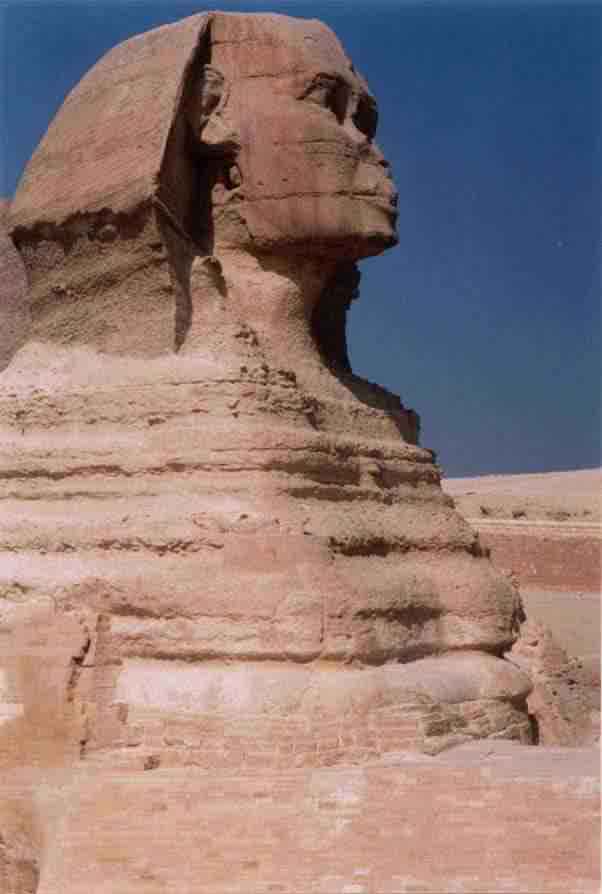 ANCIENT
EGYPT
ANCIENT
EGYPT
The History, People and Culture of the Nile Valley
The History, People and Culture of the Nile Valley |
|
Heka at the
Louvre Earlier this year,
the Louvre hosted an exhibition on Egyptian magic and ritual. Cathie Bryan takes us through the revealing items in a review that
compliments our Nine Measures of Magic series. The thematic exhibition presented
objects associated with magic and sympathetic magic which are normally dispersed
between the Louvre's four Egyptian circuits, supplemented by related objects on
loan. This compact exhibition was organised into four rooms. Room 1 introduced the nature of heka as a component of Egyptian views of the supernatural, including representations of it as a man surmounted by the hieroglyph which writes his name, as a child with a solar disk, and as a helper to Horus upon the crocodiles. The force of heka could be harnessed by mankind as a protection against visible and invisible enemies found in the world of the living, the world of the dead and the world of the gods. Much space was devoted to the classical enemies of Egypt depicted as bound captives. Rendering representations of the enemy helpless through art and spell was part of the magic needed to defeat him. Cosmic enemies the serpent Apophis and Seth and the eternal cycle of their challenges and defeats were shown alongside the forces of order and goodness, such as Ma'at, the sun god in his various aspects and Osiris and Isis. Their roles were however more complex than this: Apophis, it is pointed out in the accompanying catalogue, was always defeated, and Seth played an important role in the Egyptian pantheon, possessing temples of his own. Magic objects and spells to defeat the gods of disorder through ritual by man and the gods were well illustrated in this first section. Re is prominent as defender of the state, particularly in his form as a predatory beast such as the 'Great Cat of Heliopolis. x From time immemorial, the god Bes had associations with the goddess Hathor and the magic needed for safe parturition. His popularity lasted well into Ptolemaic times. The programme of Room 2 was magic and religion in the realm of the temple, and magic and the state. Reliquaries, talismans, magic 'balls' bearing the name of a deity, statuettes and ex-voto of protective deities and papyri featured in this presentation of the interface between magic and religion. As the head of state, pharaoh's role in maintaining order on earth and his responsibility to protect the people (rekhyt) in general and against the classic enemies of Egypt was examined in execration texts, sculpture and stelae. The other side of magic and the state explored was the impossibility of effective rebellion and resistance against the power of the king, as pointed out by Dr Kousoulis in his series of articles; magic was simply viewed as one possible form of rebellion and magical methods aimed at harming the king were treated accordingly. Room 3 presented aspects of the magician's 'user manual'. sources of magic writings, what to say, necessary gestures, and accessories and talismans appropriate to the occasion. Room 4 grouped together diverse themes: threats in everyday life for which magic could provide some protection (against, for instance, the anger of the gods, illness and dangerous animals), mythological and historical magicians and the survival of magic in Graeco-Roman Egypt. Highlights include cover boy Bes panthée (cat. 140a) and many other examples of Bes as a magical helper. Catalogue objects 250-252 illustrate a love spell assemblage, complete with the text and figure of the object of desire as a bound captive pierced by (non destructive) needles. Representations of and evidence for of real-life magicians and priests was an intriguing concept. Hetepi, head of magicians, with his bag of magic tools (cat 208) was most impressive. The last section of room 4 examined Egyptian magic and the occult understood from the 19th century through the present. Back to Ancient Egypt Magazine -
Issue Nine contents
|
|
Return to Home
with questions or comments about Ancient Egypt Magazine. e-mail to: empire@globalnet.co.uk for
sales, subscriptions, back numbers and advertising |